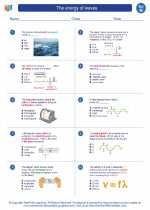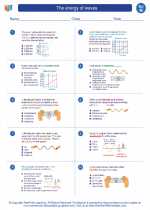Longitudinal Waves
In physics, a wave is a disturbance that travels through a medium, transferring energy from one point to another. Longitudinal waves are a type of mechanical wave in which the particles of the medium move parallel to the direction of the wave. This is in contrast to transverse waves, in which the particles move perpendicular to the direction of the wave.
Some common examples of longitudinal waves include sound waves, seismic waves, and waves in a coiled spring.
Characteristics of Longitudinal Waves
- Direction of Particle Motion: In a longitudinal wave, the particles of the medium move back and forth in the same direction as the wave.
- Compression and Rarefaction: Longitudinal waves have regions of compression, where the particles are close together, and rarefaction, where the particles are spread out.
- Propagation: Longitudinal waves propagate through the medium by transferring energy from one particle to the next.
- Speed of Wave: The speed of a longitudinal wave depends on the properties of the medium through which it is traveling.
Study Guide
Key Concepts
- Definition of longitudinal waves
- Comparison to transverse waves
- Characteristics of longitudinal waves
- Examples of longitudinal waves
Questions to Consider
- What is the primary difference between longitudinal and transverse waves?
- How do particles in a medium move in a longitudinal wave?
- What are compression and rarefaction in a longitudinal wave?
- How does the speed of a longitudinal wave relate to the properties of the medium?
- Can you identify and explain examples of longitudinal waves in real-life situations?
Activities
- Observe and analyze the movement of particles in a slinky to demonstrate longitudinal wave motion.
- Conduct an experiment to measure the speed of sound in different materials to understand the relationship between wave speed and medium properties.






